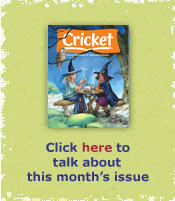![]()
Weird Dances
Chatterbox: In This Month's Issue
Weird Dances
Weird Dances
CAN YOU DO the Prinkum-Prankum? How about Dull Sir John, Fain I Would, or Moll Patley? These were some of the most popular dances in England three hundred years ago. For something more modern, you might ask your parents or grandparents about the days when the Hustle, Monkey, Twist, Bunny Hug, and Fox Trot were all the rage.
Dances change as quickly as fashions in clothing and language. Dance, in fact, is a language in itself and probably the oldest and most universal of the arts. I can't think of a country in the world that doesn't have its own special dances, from the complex steps and rhythms of African nations to the slow, subtle movements of Indonesia. And think of Indian and Eskimo dances, Hawaiian hulas. Not to forget fandangos, jotas, polkas, reels, hoedowns-there's no end to them.
Since the beginning of time, people have danced for joy or sorrow, to mourn death or celebrate birth, to express their deepest religious feelings, or for the sheer pleasure of movement. Dance has been a form of prayer-for rain, sun, and abundant harvests. It's been another kind of storytelling, a living history book, or a way to gain magical power. The earliest dance steps, I suppose, came from imitating animals, birds, and fish, or the forces of nature.
Today, we dance mainly for fun. But an ancient tribe in the South Pacific took dancing rather seriously. They had guards ready with bows and arrows in case a dancer made a misstep. I think I'll just sit that one out.
(January 9, 2014 - 4:55 pm)




My heritage is from India. And my mother, being a citizen of India, has taught me folk dances on Indian music. The dances express emotions and often portray characters from the ancient scriptures of India .
(February 5, 2014 - 12:54 am)